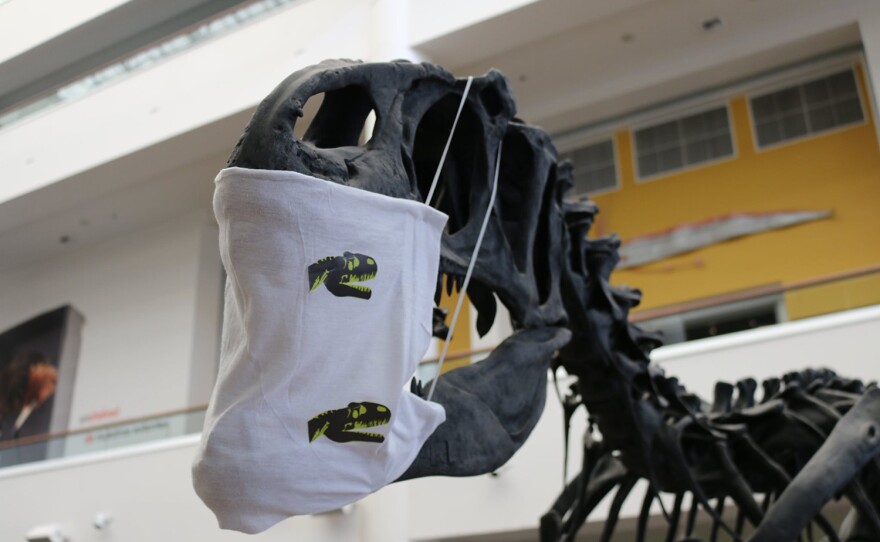The San Diego Natural History Museum announced Friday that they will remain closed through at least the end of the year. Recognizing the volatile nature of the pandemic, the museum cited the need to have a fixed goal, protect the community and make better use of resources.
After a very brief reopening in early July, the museum shut its doors again after San Diego's coronavirus numbers put the county onto Governor Newsom's watch list.
RELATED: A (Brief) Glimpse Of Reopening For San Diego Museums
Maintaining 100 current employees, the museum is shifting its staffing focus towards supporting the distance learning models for local schools and students, and connecting them to the natural environment in the region. Lesson plans, video series and interactive resources are ways that the Nat is looking to bring a traditional field trip experience into the current reality. The Nat is currently working with educators and in partnerships with nonprofits to plan and devise this work.
The museum is also working on new programs to connect all residents to nature.
"We have learned a lot about the organization and about our community. We found out that we are much larger than our building," president and CEO Judy Gradwohl told KPBS in July.
The long-running Canyoneers program will move their in-person hike models to virtual trail guides and recommendations, and they're building a community science program that explores San Diego canyons. The museum will also introduce new digital programs for science and conservation interaction between staff and the public.
They're also working on redesigning certain components of the museum, including finalizing plans for interpretive gardens and a new museum cafe.
Like some other institutions in Balboa Park — and an increasing movement nationwide — the Nat has reduced its dependence on ticket and admission income. Museums are now looking towards securing funding through programming and grant work while keeping admissions low-cost and barrier-free for the community. While the Nat does charge admission, much of their income is associated with scientific projects and major philanthropic support.
In addition to finding ways to connect San Diegans to the natural environment and supporting education, the museum has made several advances in the natural sciences in a region known as being one of the most biologically diverse in the United States.
For example, the museum helped reintroduce the locally extinct red-legged frog species into the county. This project was underway in mid-March, when the coronavirus pandemic took hold and screeched other museum activity to a halt.
And more recently, museum-affiliated botanists took part in the discovery and identification ("keying") of a native grass that had been considered extinct in the region. The grass hadn't been seen in the region in more than 130 years, and botanists speculate that invasive grasses have taken a tremendous toll on native grasses.
The museum stated that the silver lining is that they're finding ways to restructure how they reach audiences, refocus on outdoor programming and support education. "I look at this extended closure and our eventual reopening as emerging from a chrysalis, not a hibernation," Gradwohl said in a statement.
The museum plans to reopen in January 2021.






